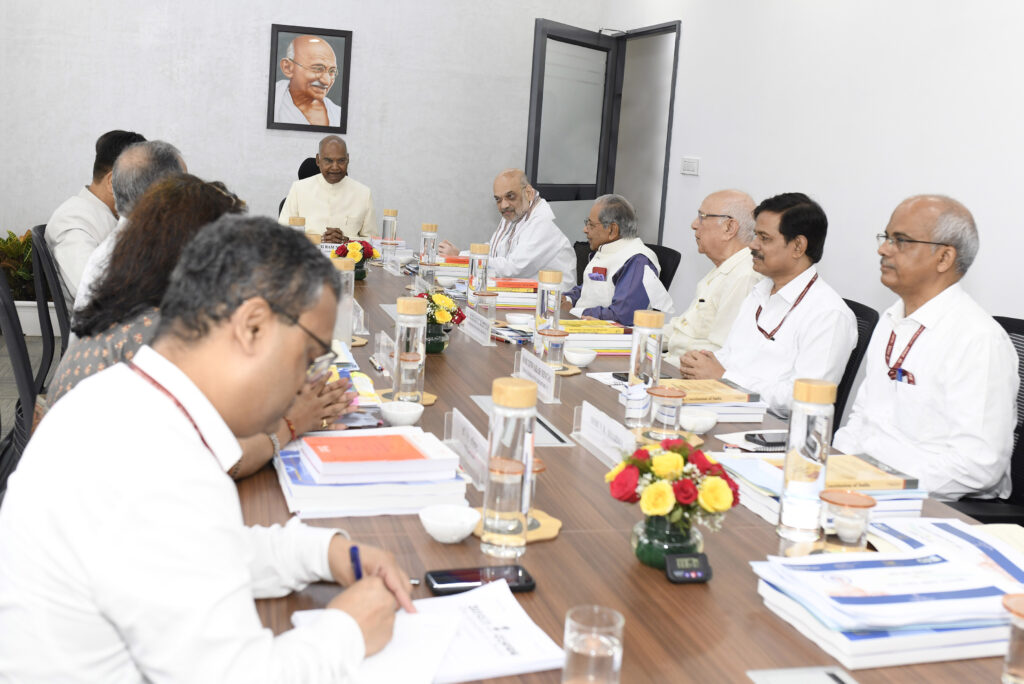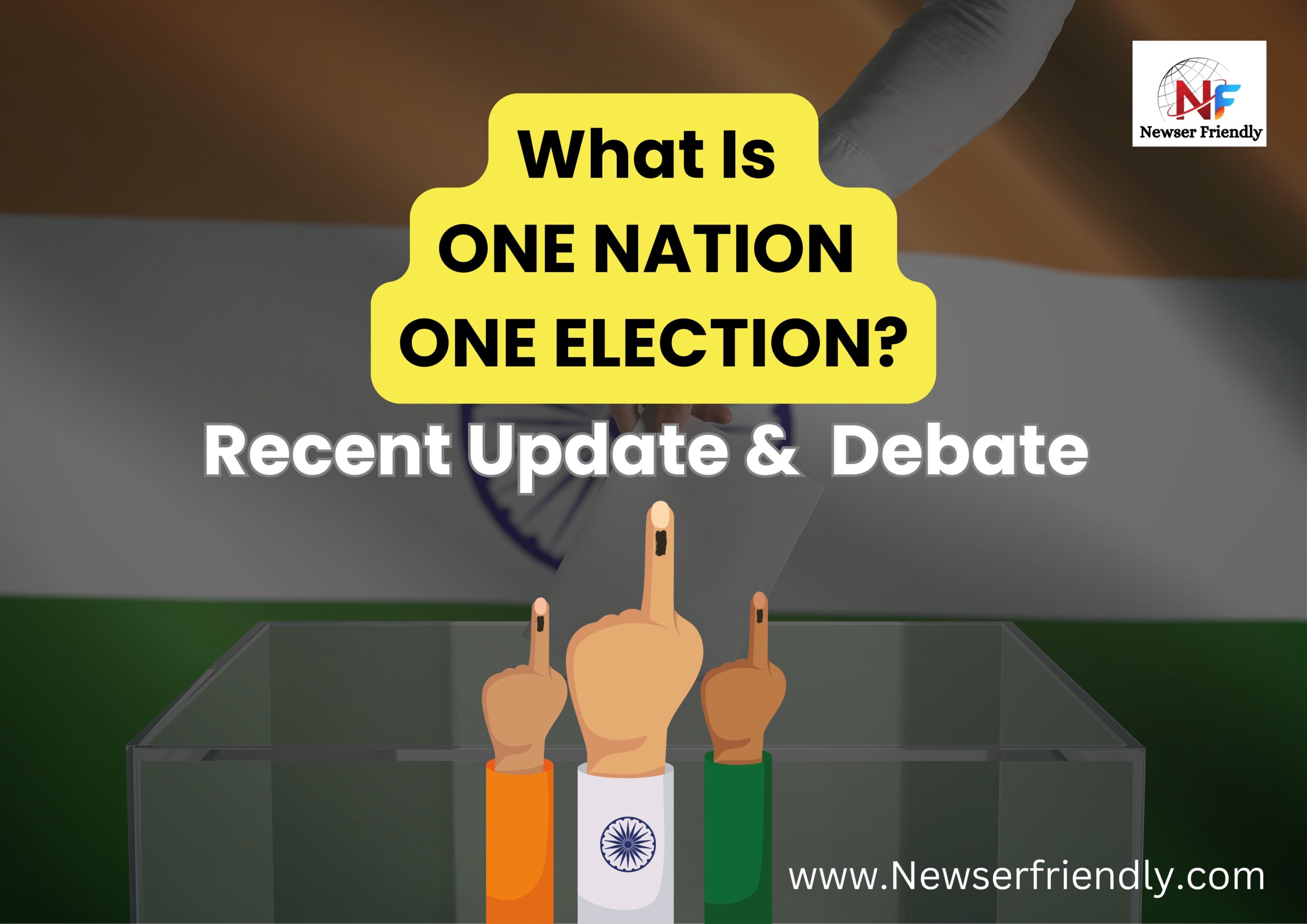
Stay informed with the latest updates on the “One Nation, One Election” proposal in India. Learn what the recent news says about the high-level committee formed by the government, which is pushing for simultaneous elections across the country. Understand the government’s stance, which argues for efficiency and cost-saving, while the opposition raises concerns about undermining democratic processes.
Delve into the history of simultaneous elections in India, explore the arguments for and against the policy, and analyze the potential impact on India’s political landscape. Read on for a balanced view of this significant debate.
Table of Contents
Overview of News
Recently, Cabinet Panel has approved One Nation One Election which means Now Lifetime of simultaneous Election in India. It has Suggested to Conduct Elections at one time or at span of some time. So, now Lok Sabha and Assembly elections, with urban body and panchayat polls to be held within the next 100 days.
One Nation One Election Means?
In simple terms, “One Nation, One Election” means that all Indians would vote for the Lok Sabha, State Assemblies, and local bodies in the same year, though not necessarily on the same day. Currently, only a few states, like Andhra Pradesh, Sikkim, and Odisha, hold their state elections at the same time as the national Lok Sabha elections.

One Nation One Election Committee
Formed on : 2 September 2023
Submits its Report : 14 March 2024
Led by : Ex-President Ram Nath Kovind.
The One Nation One Election Committee, which included prominent figures such as Home Minister Amit Shah and Law Minister Arjun Ram Meghwal, presented key recommendations addressing challenges in India’s electoral system.
Need of One Nation One Election
- Simultaneous elections were held from 1951-52 to 1967 but broke due to different factors.
- Frequent elections cause massive government expenditure and strain on resources.
- Security forces and electoral officers are diverted from their primary duties during prolonged election periods.
- The Model Code of Conduct disrupts developmental activities for long stretches.
- The Law Commission recommended reverting to simultaneous elections for better efficiency.
the Law Commission of India in its 170th Report on Reforms of the Electoral Laws observed that: “This cycle of elections every year, and in the out of season, should be put an end to.“
- Parliamentary Standing Committees have explored phased methods for holding simultaneous elections.
- Article 356– S. R. Bommai v. Union of India
The holding of a separate election to a Legislative Assembly should be an exception and not the rule. The rule ought to be ‘one election once in five years for Lok Sabha and all the Legislative Assemblies

One Nation One Election Committee’s Report
One of the panel’s significant suggestions was the introduction of provisions for a ‘unity government’ in scenarios of an indefinite election outcome or a no-confidence motion. The committee was specifically tasked with devising solutions to ensure stability in governance, even during uncertain electoral situations. Their report aimed to provide practical frameworks to manage such challenges efficiently.
Additionally, the panel proposed the creation of an ‘Implementation Group’ to oversee the execution of these recommendations.
Union Cabinet led by PM Modi
Union minister Ashwini Vaishnaw said, this move will make election process Easier for voters. Simultaneous elections will results in higher and faster Economic growth, and therefore a more stable economy.
Infact, Vaishnaw said, “The opposition might start feeling internal pressure (about One Nation One Election) as more than 80% of respondents who participated in the consultation process have expressed positive support, particularly the youth, who are very much in favor of this.”
Holding elections at all three levels – for the Lok Sabha, for state Assemblies, and for panchayats – will “avoid disruption of supply chains and production cycles due to migrant workers seeking leave of absence to cast their votes”.
The ‘one nation, one election’ push will also “prevent policy paralysis”, and do away with the “atmosphere of uncertainty” due to frequent elections, the government argued.
How it will be Implemented ?
- Unified Voter List: A single, nationwide list of verified voters would need to be created, ensuring all eligible voters across the country are registered and their details are up to date.
- Synchronization of Election Dates: Elections to both the Lok Sabha (national parliament) and all State Legislative Assemblies must be scheduled to occur simultaneously. This would involve adjusting the tenure of some assemblies or parliament to bring them in sync.
- Revisions to Legal Framework: Constitutional and legal amendments are necessary to accommodate simultaneous elections, particularly to ensure that a fixed election cycle is followed without frequent dissolutions of assemblies or parliament.
- Strengthening Electoral Infrastructure: The Election Commission of India would need to scale up infrastructure, including Electronic Voting Machines (EVMs), polling booths, and trained personnel, to manage the massive scale of simultaneous elections.
- Coordination of Security Forces: Since elections would be held nationwide at the same time, security deployment would need to be coordinated to ensure free and fair elections across all states and territories.
- Model Code of Conduct (MCC): A unified application of the MCC would be required, minimizing disruptions to governance by reducing the number of times the MCC is enforced due to staggered elections.
- Public Awareness Campaign: A large-scale awareness campaign would be necessary to inform the public about the new system and how to participate effectively.
Opposition’s Stand
15 parties, including the Congress, have opposed the plan.
The Congress head Mallikarjun Kharge called it “an attempt to divert the attention of the public“.
Senior Congress leader P Chidambaram said the ‘one nation, one election’ system is not possible under the present Constitution, as it requires at least five constitutional amendments.
Other opposition parties, specifically those in the Congress-led INDIA bloc, including the Samajwadi Party, the Trinamool Congress, and the Aam Aadmi Party have also been critical of this measure.
Mamata banerjee said, a design to subvert the basic structure of the Constitution” and create a system to allow “autocracy (in) a democratic garb to enter the national public arena”. “I am against autocracy and, hence, am against your design.
Simultaneous Election:
How the Cycle Disrupted?
The concept of simultaneous elections dates back to 1983 when the Election Commission first proposed it. Before that, simultaneous elections were the norm in India until 1967. The first General Elections to the Lok Sabha and all State Legislative Assemblies were conducted together in 1951-52. This practice continued for the next three General Elections in 1957, 1962, and 1967.
However, the cycle was disrupted in 1968 and 1969 due to the early dissolution of some state assemblies. In 1970, the Lok Sabha itself was dissolved prematurely, leading to new elections in 1971. Since then, with the early dissolution and term extensions of both the Lok Sabha and State Assemblies, the synchronized election cycle has been broken.
Arguments For Simultaneous Elections
A NITI Aayog report highlights that India holds at least one election every year, and some states have elections annually as well. The report points to multiple disadvantages of frequent elections:
- Economic Costs: Direct election costs can be as high as Rs 300 crore for a state like Bihar, with additional financial and indirect economic costs.
- Administrative Burden: Government officials often divert time from their regular duties to manage election-related work.
- Policy Paralysis: The enforcement of the Model Code of Conduct (MCC) during elections delays policy-making and implementation.
- Security Costs: Repeated deployment of security forces and their movement nationwide incurs both visible and hidden costs, including fatigue and health impacts.
Arguments Against Simultaneous Elections
- Federal Issues: Implementing simultaneous elections would require adjusting the terms of existing legislatures, which may undermine democratic and federal principles.
- Undemocratic Nature: Critics argue that enforcing a fixed election cycle could restrict voter choice and distort democratic processes.
- Regional Party Disadvantage: In simultaneous elections, voters may favor the dominant central party, which could harm regional parties’ electoral chances.
- Accountability: Holding elections more frequently enhances political accountability, as politicians must regularly respond to the electorate’s needs and concerns.
Let us know your take on it and Post a comment Newser Friendly is now available on WhatsApp channels. Click on the link to get all the latest updates from Newser friendly on your chat.

